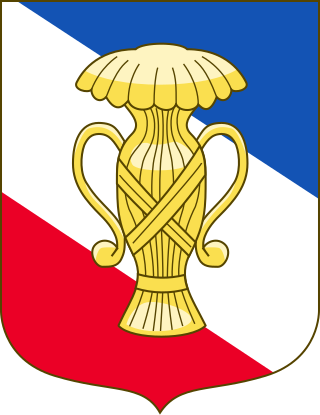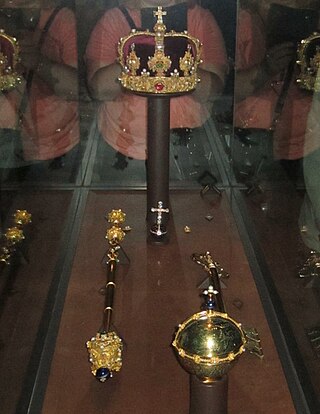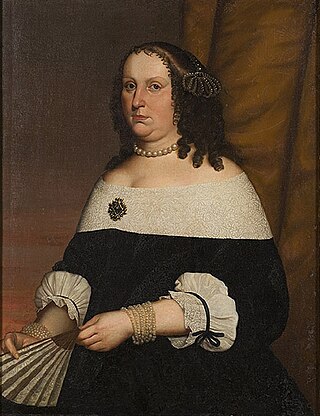
Charles XIV John was King of Sweden and Norway from 1818 until his death in 1844 and the first monarch of the Bernadotte dynasty. In Norway, he is known as Charles III John and before he became royalty in Sweden, his name was Jean-Baptiste Jules Bernadotte. During the Napoleonic Wars, he participated in several battles as a Marshal of France.

Gustav IV Adolf or Gustav IV Adolph was King of Sweden from 1792 until he was deposed in a coup in 1809. He was also the last Swedish monarch to be the ruler of Finland.

Charles XIII, or Carl XIII, was King of Sweden from 1809 and King of Norway from 1814 to his death. He was the second son of King Adolf Frederick of Sweden and Louisa Ulrika of Prussia, sister of Frederick the Great.

Adolf Frederick, or Adolph Frederick was King of Sweden from 1751 until his death in 1771. He was the son of Christian August of Holstein-Gottorp, Prince of Eutin, and Albertina Frederica of Baden-Durlach. He was an uncle of Catherine the Great and husband to Louisa Ulrika of Prussia.

The House of Bernadotte is the royal family of Sweden, founded there in 1818 by King Charles XIV John of Sweden. It was also the royal family of Norway between 1818 and 1905. Its founder was born in Pau in southern France as Jean Bernadotte. Bernadotte, who had been made a General of Division and Minister of War for his service in the French Army during the French Revolution, and Marshal of the French Empire and Prince of Ponte Corvo under Napoleon, was adopted by the elderly King Charles XIII of Sweden, who had no other heir and whose Holstein-Gottorp branch of the House of Oldenburg thus was soon to be extinct on the Swedish throne. The current king of Sweden, Carl XVI Gustaf, is a direct descendant of Charles XIV John.

The monarchy of Sweden is centred on the monarchical head of state of Sweden, by law a constitutional and hereditary monarchy with a parliamentary system. There have been kings in what now is the Kingdom of Sweden for more than a millennium. Originally an elective monarchy, it became a hereditary monarchy in the 16th century during the reign of Gustav Vasa, though virtually all monarchs before that belonged to a limited and small number of political families which are considered to be the royal dynasties of Sweden.

The House of Vasa or Wasa was an early modern royal house founded in 1523 in Sweden. Its members ruled the Kingdom of Sweden from 1523 to 1654 and the Polish–Lithuanian Commonwealth from 1587 to 1668; its agnatic line became extinct with the death of King John II Casimir of Poland in 1672.

Drottningholm Palace, or Drottningholm, one of Sweden's Royal Palaces, situated near Sweden's capital Stockholm, is the private residence of the Swedish royal family.

Holstein-Gottorp is the historiographical name, as well as contemporary shorthand name, for the parts of the duchies of Schleswig and Holstein, also known as Ducal Holstein, that were ruled by the dukes of Schleswig-Holstein-Gottorp, a side branch of the elder Danish line of the German House of Oldenburg. Other parts of the duchies were ruled by the kings of Denmark.

The House of Oldenburg is an ancient dynasty of German origin whose members rule or have ruled in Denmark, Iceland, Greece, Norway, Russia, Sweden, the United Kingdom, Livonia, Schleswig, Holstein, and Oldenburg. The current King of the United Kingdom and King of Norway are agnatic members of this house, meanwhile the King of Spain and King of Denmark are matrilineal members.

Princess Sophia Albertina of Sweden was the last Princess-Abbess of Quedlinburg Abbey, and as such reigned as vassal monarch of the Holy Roman Empire.

Charles August or Carl August was a Danish prince. He is best known for serving as Crown Prince of Sweden briefly in 1810, adopted by Charles XIII, before his sudden death from a stroke. Earlier, he had been a general in the Royal Danish Army as well as the Governor-general of Norway. His name before assuming the Swedish title in 1810 was Christian August of Schleswig-Holstein-Sonderburg-Augustenburg, or Christian August of Augustenburg for short.

Christian August of Holstein-Gottorp-Eutin was a cadet of the reigning ducal House of Holstein-Gottorp who became prince of Eutin, prince-bishop of Lübeck and regent of the Duchy of Holstein-Gottorp.

Hedwig Elisabeth Charlotte of Holstein-Gottorp was the queen consort of Charles XIII of Sweden and II of Norway. She was also a famed diarist, memoirist and wit. She is known as Hedwig Elisabeth Charlotte, though her official name as queen was Charlotte (Charlotta).

Sweden's regalia are kept deep in the vaults of the Royal Treasury, underneath the Royal Palace in Stockholm, in a museum that is open to the public. The crowns and coronets have not been worn by Swedish royalty since 1907, but they are still displayed at weddings, christenings and funerals.
Carl of Sweden may refer to:

Countess Palatine Christina Magdalena of Kleeburg of the House of Wittelsbach, Margravine of Baden-Durlach, was a Swedish princess, daughter of John Casimir, Count Palatine of Kleeburg and Princess Catherine of Sweden. Christina Magdalena belonged to Swedish royalty as a sister of King Charles X of Sweden, and grew up in Sweden.

The Gustavians were a political faction in the Kingdom of Sweden who supported the absolutist regime of King Gustav III of Sweden, and sought after his assassination in 1792 to uphold his legacy and protect the interests of his descendants of the House of Holstein-Gottorp.

















